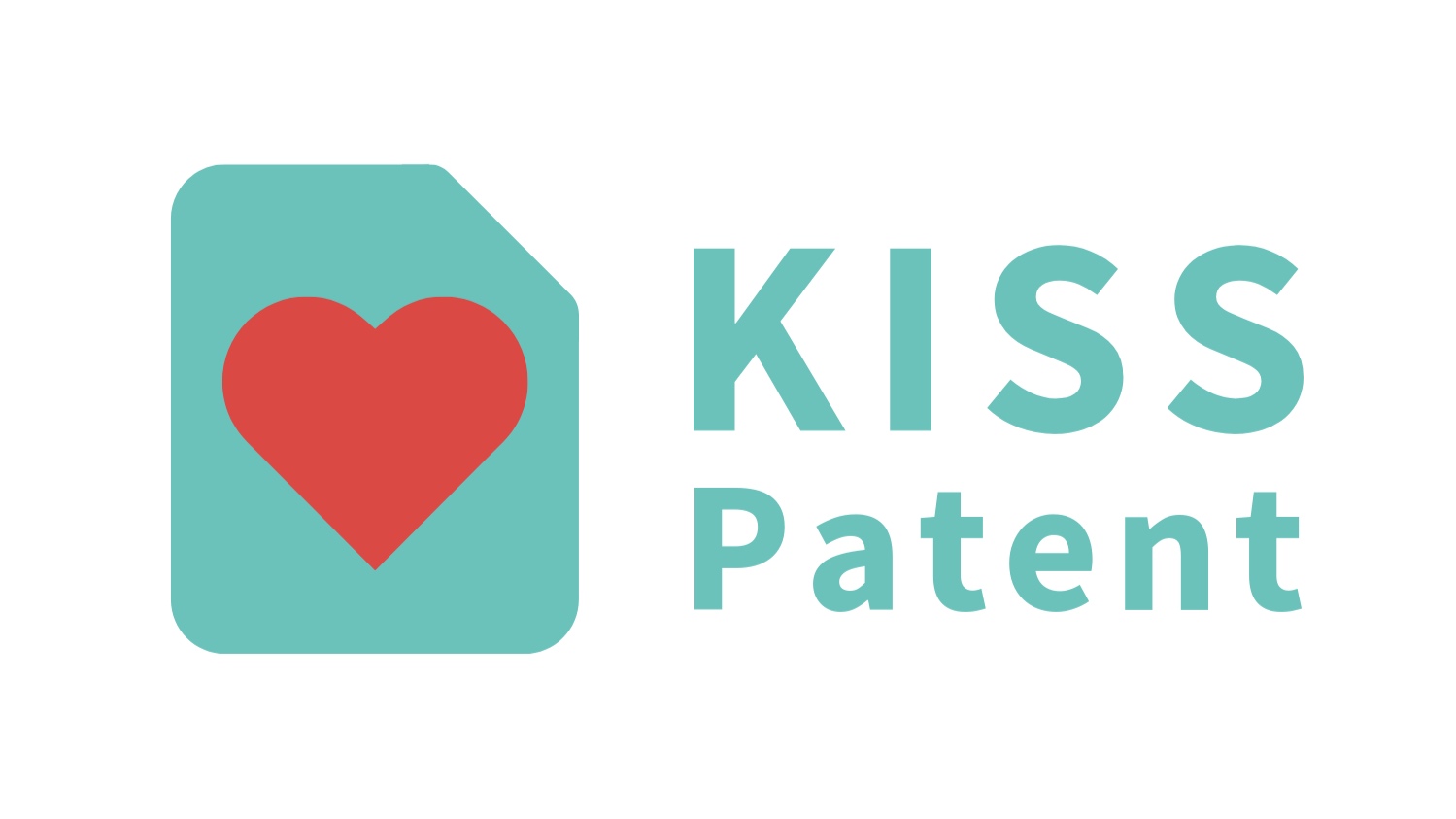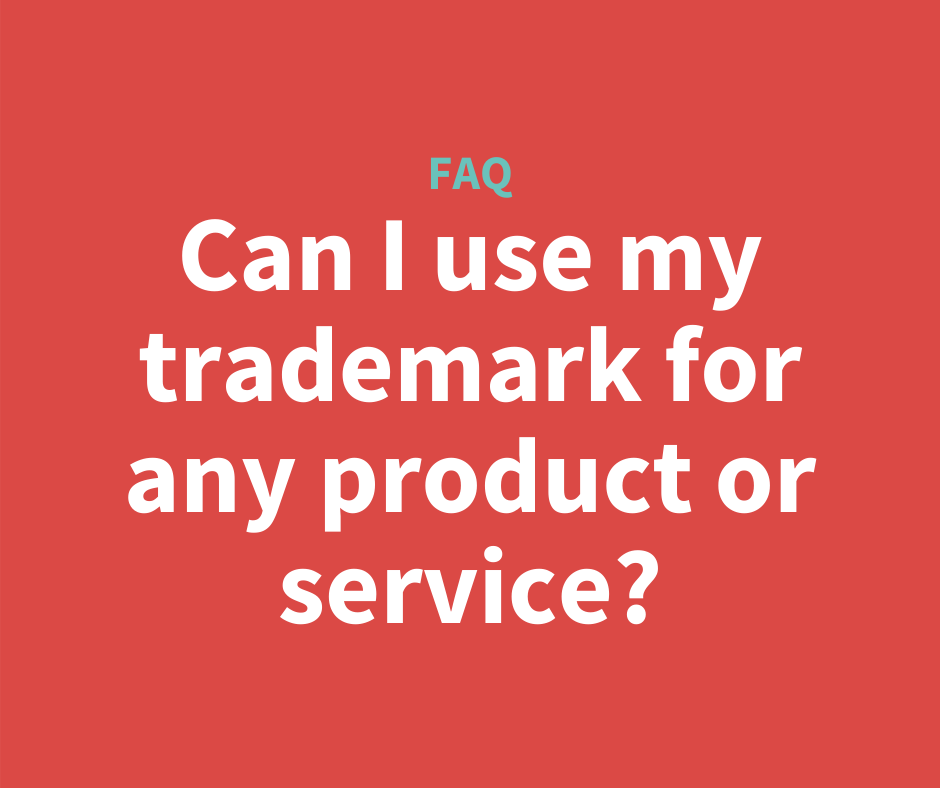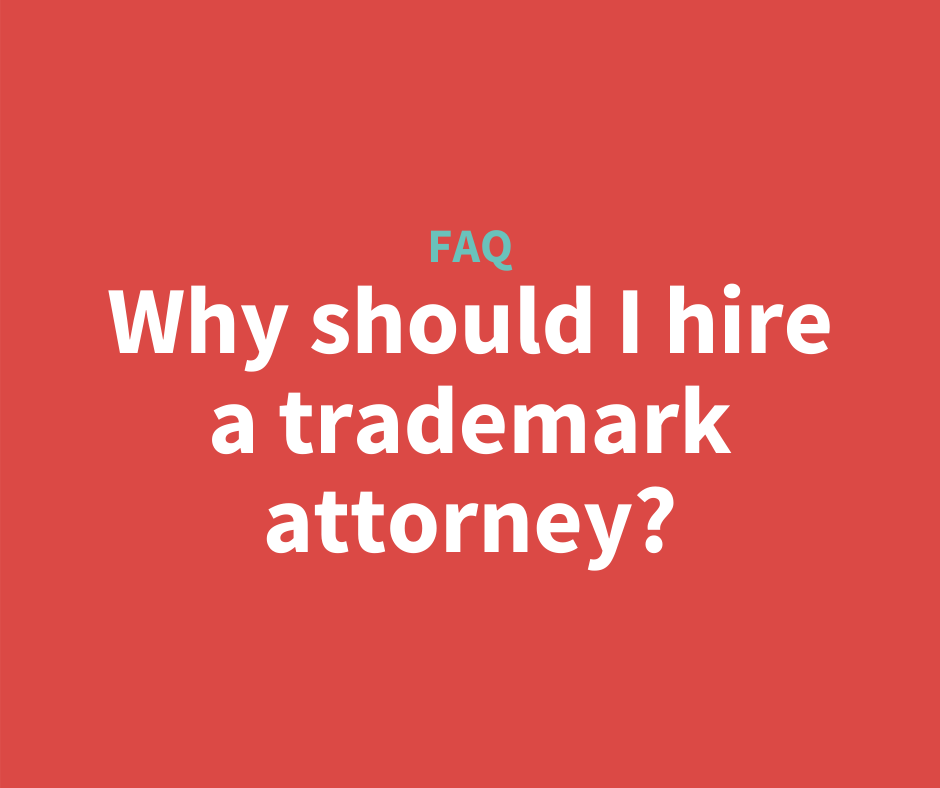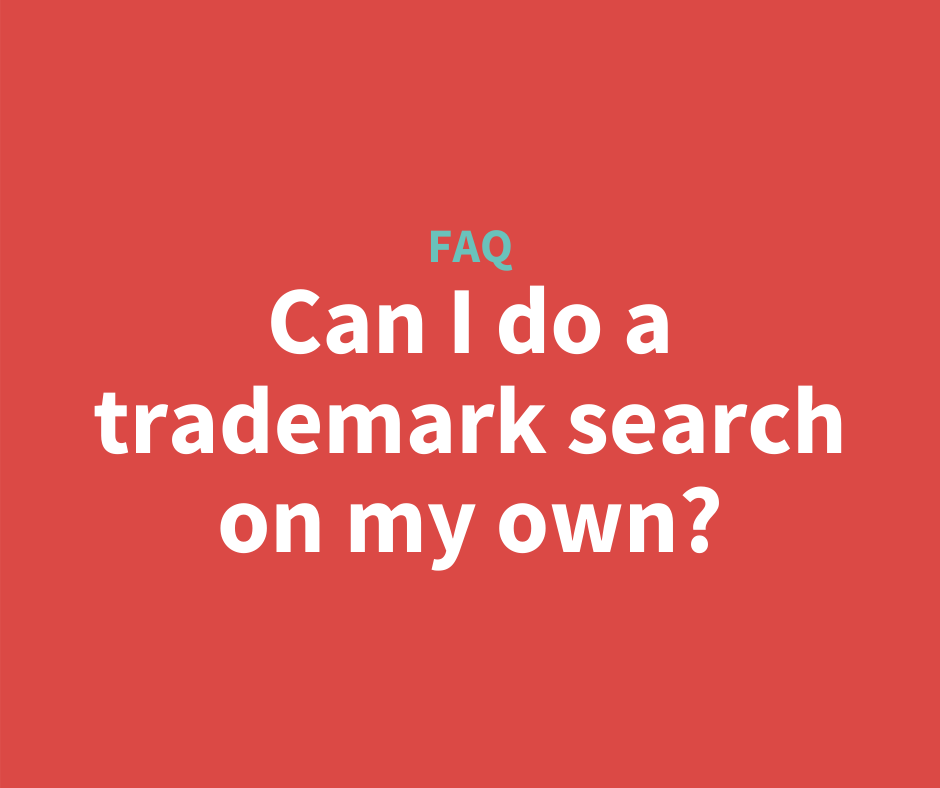Hey, we're so glad you're here!
This is truly the place to learn everything you need to know about protecting your most valuable asset, your brand.
We’ll brush up on the basics of trademarks, the most common pitfalls and how to avoid them, what to look out for, and what you need to do before, during, and after filing.
Here’s everything you need to know about trademarks and protecting your brand. There’s a blend of text, videos, and downloadables all designed to help you make the most out of your learning experience.
Feel free to navigate the page with the sidebar links, but make sure to follow the content in the right order.
Guide to Trademarks Table of Contents
Click on each chapter to go directly to it!
Ready to protect your brand? Start with the first chapter below!
Chapter 1
What is a Trademark
and Why Do You Need One
This chapter will guide you through the basics — What is and what isn’t a trademark? Why do you need one? What can happen if you don’t get one?
What is a trademark?
A trademark is a word, phrase, symbol, design, or a combination of all of the above. It identifies and distinguishes the source of goods from one party to all other parties. A service mark is a type of trademark that identifies and distinguishes the source of a service rather than the goods.
In other words, getting a trademark on your business will help you to identify, distinguish, and therefore protect your brand name from your competitors.
What is not a trademark?
Usually, people confuse trademarks with patents or copyrights. Patents and copyrights protect different types of intellectual property. Copyrights protect original artistic or literary works whereas patents protect inventions, or unique ideas. A trademark, on the other hand, protects brand names and logos used on goods and services.
For example, if you invent a new kind of software, you would apply for a patent to protect the invention itself. You would also apply to register a trademark to protect the brand name of your software, and you might register copyright to protect the software code itself, or the unique commercials promoting the software.
Why do you need a trademark?
If you are selling a unique product or service or are operating a unique business, you should seriously consider registering a trademark for your brand. By registering your trademark with the United States Patent and Trademark Office (USPTO), you get several benefits: you can use your brand exclusively nationwide, without concern that your competitors might use it as well; you have the right to use the federal registration symbol "®"; and most importantly, you will have the ability to bring an action to court if someone uses your brand name without your approval.
A registered trademark is a stress-free approach for anyone who operates under a brand name. Though common law protects every business owner and their brands to some extent, common law trademarks do have location-limitations. If you want to protect your brand name in your state, or even nationwide, you need to file for a trademark. Getting a trademark is a simple, inexpensive, and straightforward process.
What happens if you don’t get a trademark?
The most important problem you can face when not owning a trademark is others can legally use your brand name, which can be detrimental for your business. With a trademark, you can bring legal action to those who misuse your brand name, such as using it without your approval, or copying your brand name.
The question is not what happens when you don't have a trademark on your brand, the question is: if the process of obtaining a trademark is easy, straightforward, and inexpensive, why not treat it as part of your business plan?
Getting a mark on your brand should be at the same level of importance as incorporating your company.
Download the ebook
Do you have questions?
Get all the answers you need in a trademark consultation call with one of our experts!
Do you have any questions?
We’ve probably answered it already! Check our Frequently Asked Questions to know more.
Chapter 2
What You Need to Know
Before Filing a Trademark
This chapter will guide you through the basics — What is and what isn’t a trademark? Why do you need one? What can happen if you don’t get one?
Is your brand eligible for a trademark?
There are several options where you cannot get a trademark to protect your brand. Not every mark is registrable, nor is every mark legally protectable. This is mainly because the mark might not be capable of serving the basis for a legal claim by the owner who is seeking it.
The most common refusal of registration is when you want to trademark a brand name that is already registered by others. In this case, you will get a refusal based on "likelihood of confusion" — which means that your trademark and the registered mark are similar enough that average consumers are likely to confuse the origin of the goods and/or services for your trademark and the registered mark. Actual confusion is not required for a “likelihood of confusion” refusal.
Other grounds for refusal can be the use of an individual's name, a surname, an offensive or disparaging word, geographically descriptive origin of goods and/or services, or a foreign term that translates to a generic term.
To accurately assess your brand for a possible registered trademark, it is vital to do a specific trademark search. The search can help you to find out if others registered a similar brand name before, or your registration has any potential flaws built-in.
How to do a trademark search?
To ensure you can register your brand name as a trademark with the USPTO, you first need to do a trademark search.
The USPTO offers a search system known as TESS (Trademark Electronic Search System), which you can use to do trademark searches. On TESS, you can search for possible brand names and marks, which are already filed or in a trademark pending status.
Using TESS is an excellent way to search for trademarks since TESS is connected to the same database that USPTO uses to conduct its searches — however, it is useful to search outside of TESS for unregistered marks, such as doing a Google search.
Using search engines like Google, or domain name registrars like GoDaddy, allow you to get an idea of who has a brand name that is similar to, or the same, as yours.
Download the ebook
Do you have questions about what you need to do before you file for a trademark?
Get straightforward, clear answers from one of our trademark experts in a consultation call!
Do you have any questions?
We’ve probably answered it already! Check our Frequently Asked Questions to know more.
Chapter 3
How to File
a Trademark Application
This chapter will run you through all the essential information you need to learn how to file a trademark application properly and effectively.
Essential information about filing a trademark application
Filing a trademark is easy — you need to gather only two types of information in order to file properly.
The first section requested is basic administration information: your name, address, and any information basically describing who the owner of the mark will be. The owner of the mark is the person or entity (legal entity, such as an LLC or corporation) who controls the nature and quality of the goods and/or services identified by the mark. You don't need to be a U.S. citizen to apply for and obtain a federal trademark registration.
The second section is the actual description of the trademark. Here, you will describe your trademark with drawings and an explanation of your goods and/or services. Let’s delve in a little deeper and talk about the drawings.
There are two types of drawings: standard character and special form. The standard character drawing is the name you want to protect, described in a written format: words, letters, or numbers. The standard character protects the wording itself and provides broadest protection because the protection is not dependent on fonts, styles, sizes, or colors. Meaning that you can change the fonts, styles, sizes, or colors of a registered trademark without having to apply for another registration.
If you want to protect a specific design or a special style, such as a logo or a designed tagline, you have the second drawing option: the special form drawing. With this drawing, you’ll need to design the unique logo or design element and upload it with your trademark application.
After the drawings are defined, you’ll have to specify the goods and/or services that your mark would represent. Goods are products, such as a specific type of pizza. Services are activities for the benefit of someone else, such as a pizzeria that provides pizza products. A clear description of your goods and/or services is essential when filing a trademark - since the marked brand will represent the very specific services and/or goods you perform or develop.
When filing your trademark application, you also have to select whether you are currently using your trademark or are intending to use it in the future without currently using it. If you are currently using your trademark, you will need to submit a proper specimen in your application.
A specimen is evidence of actual use of your trademark in the marketplace, such as a picture of your logo affixed to your product.
If you haven’t started using your trademark but intend to use it after filing, you will need to submit a proper specimen towards the end of the registration process. The USPTO will not register your trademark without a proper specimen.
Of course, exceptions do apply when your trademark application originates outside of the United States
How to file your trademark application
In today’s digital world, you can file a trademark online — however, there are many options and different types of applications that you can choose from.
Let’s start with the different types of filing options that the USPTO provides, such as TEAS Plus, TEAS RF, and TEAS Regular application. TEAS Regular is the most expensive option, but it has the most flexible application process — you can even do it by way of a paper application if you prefer. TEAS RF, or Reduced Fee comes with a lower cost compared to the Regular, but it requires online communication with the USPTO from your end. TEAS Plus has the lowest fee, but it has the most requirements - everything is fixed in the process. We always recommend filing with TEAS Plus because you can reduce the filing fee costs, plus be aware of the full requirements with the help of a trademark attorney.
No matter what filing application you choose, you will need to provide some important information when you file, such as the following: the owner of the mark (i.e., applicant); name and address for correspondence; the description of the mark, goods/services description and its international class; USPTO filing fee; filing basis, such as 1(a), or use-in-commerce application, or 1(b), or intent-to-use application; and specimen for use-in-commerce applications.
The USPTO application form will prompt you to provide the necessary information when filling out your application. Thus, it isn’t necessary that you remember everything that you will need.
However, prior to filing your application, it helps to gather all the information together!
Trademark Application Fees
Trademark Application Filing Fees and Requirements
Download the ebook
Do you have any question about your filing process?
Book a consultation call with one of our trademark experts and save time and money. Get the advice you need!
Do you have any questions?
We’ve probably answered it already! Check our Frequently Asked Questions to know more.
Chapter 4
Common Pitfalls
When Filing a Trademark
In this chapter you’ll learn what happens after filing, what the most common pitfalls are and how to avoid them, how a trademark attorney can help, and what the typical maintenance documents look like.
After filing
Now that you have filed for a trademark, there are a couple of things that can happen. The first question always asked is: What is the turnaround time? When will you get an approved trademark? It typically takes the USPTO around 8 to 14 months to register a trademark, longer if issues arise.
If no issues arise, or all of them are resolved within the time limit, your trademark application gets approved for publication. This means that your application will get officially published on the USPTO's website in their Official Gazette.
In all cases, we recommend authorizing the USPTO to communicate with you via email, and you check back regularly every 2-3 months on your application on the USPTO's website. Once you get the mark you will need to file a maintenance document a few years later, which means you still want to retain ownership of the mark.
An office action is a letter from the USPTO, stating that your application contains an issue or issues that must be corrected before the USPTO will register your trademark. Like we said, failing to respond within the allotted time (six months) will result in the USPTO abandoning (i.e., canceling) your application.
If your response to the first Office Action (i.e., non-final office action) did not overcome the issue or issues raised, the USPTO will give you a second opportunity by issuing a Final Office Action. If you are unsuccessful in overcoming the issue or issues in the Final Office Action, the USPTO will abandon your application.
An office action may raise issues that are easy to overcome, such as a disclaimer — which means that you don’t claim a right in a certain word or words, thus allowing the public to use that word or words. Or issues that are very difficult to overcome, such a likelihood of confusion refusal — which requires performing a legal analysis and making legal arguments.
How can a trademark attorney help you
Filing for a trademark, or even a simple trademark search, can be overwhelming and complicated if you aren’t familiar with the registration steps or legal terminology used. Our attorneys are specialized in Intellectual Property Protection and can help move you through registration with zero difficulty.
Our attorneys prepare and file your trademark registration application according to USPTO’s strict requirements, ensuring that your mark won’t be rejected due to common filing errors.
Even the simplest of mistakes, such as an accidental misspelling of the owner’s name, can cost valuable time and, more importantly, money.
Investing in proper trademark protection with our qualified attorneys is an important step in protecting your brand now and in the future.
Download the ebook
Are you afraid of falling into a pitfall?
Solve any questions you might have before filing and avoid pitfalls! Book a consultation call with one of our experts and get clarity about your next steps.
Do you have any questions?
We’ve probably answered it already! Check our Frequently Asked Questions to know more.
Chapter 5
Your Personal
Trademark Assessment
This chapter will teach you how to assess your trademark with a special survey to help you along the way.
How to assess your trademark
Now that you know how to file, let's get to work on registering your first trademark. As you have learned, there can be several issues when filing for a trademark — your first step should be reducing the risk with a simple trademark search.
It’s best if you start the assessment with a simple online search to make sure that you don't end up filing for something that is already used by a competitor. A simple internet search can't substitute a proper trademark search, but it’s a good start.
Once you’re a bit more certain that you’ll be the first to register that trademark, the next step is filling out our questionnaire. We will ask you questions that will help to assess your trademark — making sure that when you file, you will get quick approval.
Our questionnaire is extensive, so we suggest taking the time to fill it out appropriately. We’ll collect your responses, evaluate them, and provide you with well-founded feedback on consultation call with our trademark attorney. You’ll be able to ask questions and discuss the possible next steps for your trademark.
BRAND PROTECTION AUDIT
Next steps
We’ll evaluate your individual assessment
You’ll get the results within 48 hours
You can schedule a call with our expert right away to discuss the findings
Download the ebook
Want to reduce risks in your trademark process?
Book a consultation call with one of our experts and get advice, strategic information, and reliable information to file for your trademark.
Summary
Successfully Protecting
Your Brand NameGetting a trademark registered for your brand is the most important step for protecting your business and future profits. First, it’s important that you understand what a trademark is, if your brand is eligible for registration, how to file, what to do after filing, and successfully assessing your trademark.
However, in order to ensure that your can get a registered trademark, it’s imperative to do a thorough trademark search, to help you find out if the brand name is already registered or there are potential flaws in the name you’ve chosen.
The next step in filing for a trademark is doing just that: filing the paperwork. Don’t worry though! We’ll do all the heavy lifting for you, saving you time and money by avoiding potential issues with your paperwork or supporting evidence.
Finally, we’ve created an extensive questionnaire for filing a trademark, allowing us to provide you with unparalleled feedback from our experts.
So, are you ready to take the next step in registering for a trademark for your brand?
Feel free to get in touch with us if you still have questions! We can’t wait to get to know you and help you succeed!


































